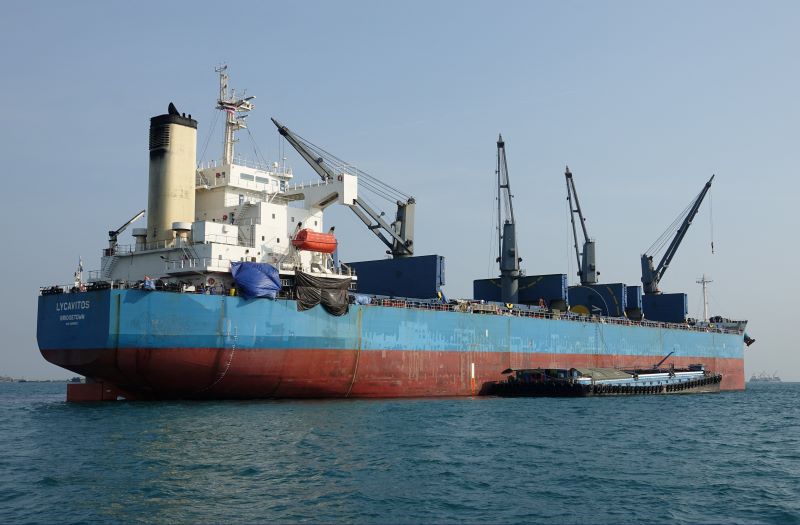A levy on shipping emissions will be discussed by governments at IMO talks this month, with climate-vulnerable nations seeking funding from the industry
Discussions about climate finance are usually framed around national borders: wealthy countries rightfully paying more than less-developed states for their historic responsibility in the climate crisis.
But holding only countries accountable for the damage done to our planet lets other polluters, often much larger than some major economies, off the hook.
We have a unique opportunity to rethink the whole approach, and set an important precedent where a major emitting industry – for the first time ever – pays for its greenhouse gas (GHG) emissions at the global level.
This industry is international shipping, whose global climate regulator, the UN’s International Maritime Organization (IMO), is meeting on March 11-22 to negotiate on policies to achieve its climate commitments and cut GHG emissions from ships.
This includes putting a price on shipping emissions, which the IMO has agreed to adopt in 2025.
Pacific “mixed feelings” after compromise on shipping’s climate goals
A multi-billion dollar sector powered by cheap fossil fuels, shipping has reached the point of emitting more pollution than all but the top five emitting countries worldwide. This is roughly the same amount as Germany or Japan in a year, and yet it remains almost tax-free.
Last year, the IMO reached a historic agreement to cut emissions 30% by 2030 and 80% by 2040, in order to reach net-zero by mid-century. This was in great part due to the valiant efforts of the Pacific Island delegations, who have for years now led the push for the highest ambition possible at the IMO.
Even though these targets fall short of what climate scientists say is necessary to limit global temperature rise to the Paris Agreement’s 1.5°C goal, it is in of itself the first deal of its kind. If achieved, it will help avoid over 10 billion tonnes of emissions cumulatively from now to 2050.
Polluters must pay their fair share
A growing number of governments and industry players back putting a price on international shipping emissions, so that polluters pay their fair share for the transition through a levy.
But the devil is in the details, and all eyes must be on the IMO, where the final decisions will be taken.
A well-designed levy will speed up the phase out of GHG emissions, help close the price gap between fossil and sustainable alternative fuels, and send a strong market signal to move towards zero emission solutions. But this must be done in a way that is just and equitable, particularly for those in the developing countries most impacted by the climate crisis.
Dozens of oil & industry lobbyists attended secretive shipping emissions talks
Crucially, a good levy will also generate significant revenues – between $1 trillion to $3.7 trillion could be raised by 2050. As called for by the Pacific islands at IMO, and supported by analysis from the World Bank, these funds ought to be allocated first and foremost towards supporting climate-vulnerable countries.
These revenues are new and additional, and completely separate from developed countries’ climate finance commitments negotiated at the COP summits. This is of paramount importance – otherwise we would be shifting the historic responsibility for climate change from developed countries, and their commitments under the UN climate convention, to industry.
These are two completely distinct and independent sources of funding.
The push for an ambitious levy
There are several levy proposals the IMO can choose from. The most ambitious one – which could secure a j
Read More

